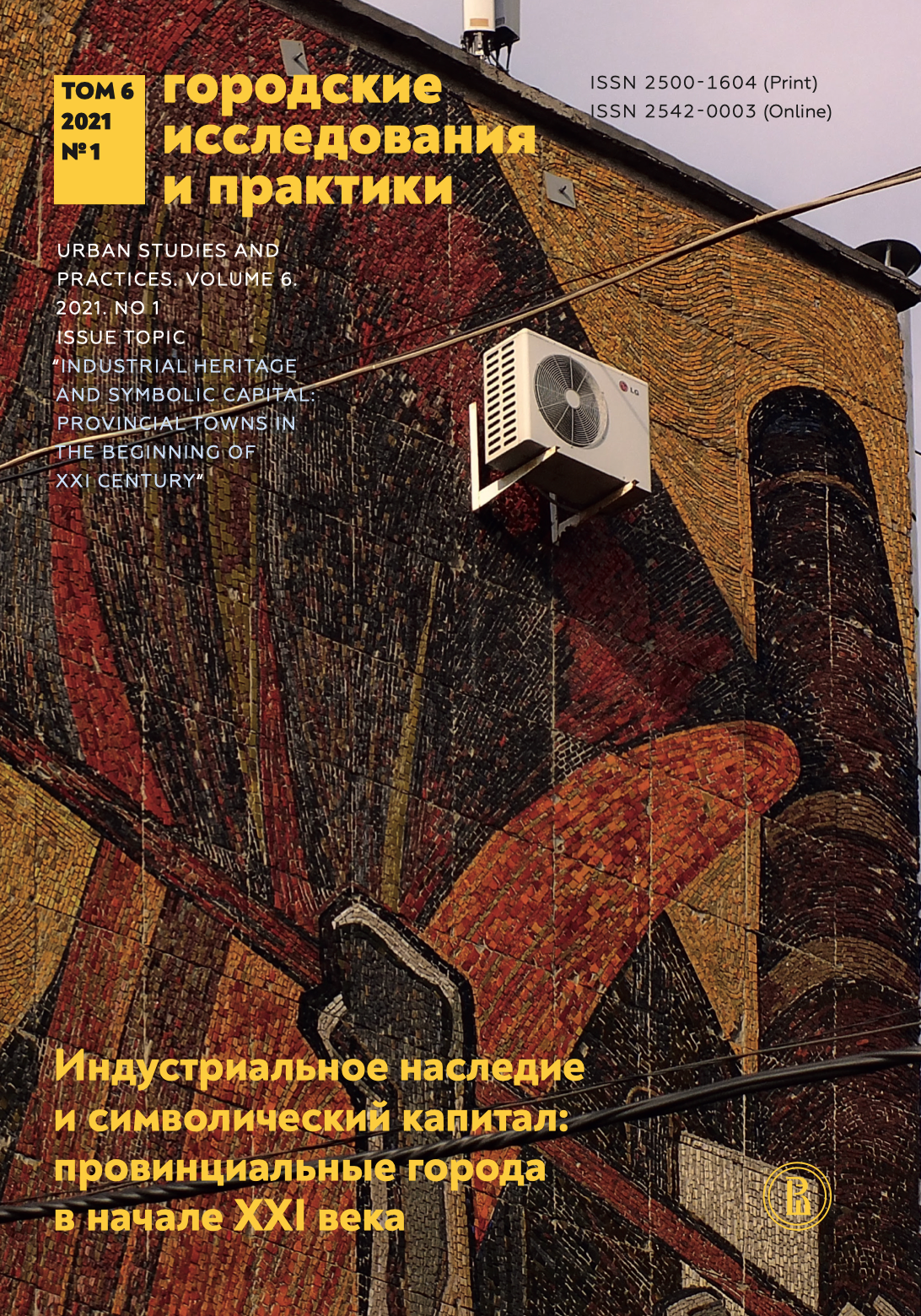Переименование городской топонимии как средство переопределения местной идентичности: декоммунизация названий улиц в Польше
Аннотация
В период перехода Польши к демократии и в последующие годы декоммунизация городской топонимии стала важным аспектом символических изменений. Общий курс на переименование улиц был одинаковым для всей страны, но темпы этих изменений, а также степень терпимости к символам прошлого варьировались. В этой статье анализируются случаи трех крупных польских городов. В Кракове основу местной идентичности составляла его долгая и богатая история и определенный уровень самостоятельности в определении символического ландшафта. В Варшаве, в свою очередь, вследствие исключительных событий времен Второй мировой войны в названиях улиц был увековечен целый ряд новых мифов и фигур. Более того, благодаря статусу столицы идентичность Варшавы оказала влияние на канон польской истории в целом. Это влияние затронуло и третий анализируемый город, Вроцлав. В силу долгой истории связей этого города с немецкой культурой лишь крайне ограниченная часть его символического капитала оказалась совместима с новым патриотическим каноном. В результате Вроцлав принял в свою городскую топонимию огромное количество символов, не связанных с его собственной памятью, одновременно ликвидировав те символы, которые были связаны с местной идентичностью. Принятие внешнего наследия, таким образом, было стратегией избегания конфликта с доминирующим нарративом.
Скачивания
Литература
Бурдье П. (1993) Социология политики. М.: Socio-Logos.
Alderman D. (2002) Street Names as Memorial Arenas: The Reputational Politics of Commemorating Martin Luther King Jr: In a Georgia County // Historical Geography. № 30. P. 99–120.
Azaryahu M. (1996) The Power of Commemorative Street Names // Environment and Planning D: Society and Space. Vol. 14. № 3. P. 311–330.
Bourdieu P. (1991) Language and Symbolic Power. Cambridge, MA: Harvard University Press, 1991. P. 239.
Hamada T. (2002) Contested Memories of The Imperial Sun—History Textbook Controversy in Japan // American Asia Review. Vol. XX. № 4. P. 1–38.
Hatch M. (2014) Bloody Memories—Affect and Effect of World War II Museums in China and Japan // Peace & Change. Vol. 39. № 3. P. 366–394.
Johnston R., Rijmeester H. (2009) Awake Anon the Tales of Valour: The Career of a War Memorial in St. Catharines, Ontario // The Canadian Geographer / Le Geographe canadian. № 53. P. 404–426.
Kędziors K. (2012) Mazewnictwo ulic Wrocławia w latach 1945–1989. Warszawa, IPM.
Kozik R. (2009) Kogo uniteral człowiek z marmuru // Wiadomości z Krakowa. Режим доступа: https://krakow.wpborcza.pl/krakow/1,44425,6401136,Kogo_uniteral_czlowiek_z_marmuru.html (дата обращения: 18.04.2021).
Kozicki M. (2016) Koniec z ulica Berlinga. Krózne nazwy ulic mogą być jeszcze zmienione? // Wiadomości z Wrocławia. Режим доступа: http://wroclaw.wpborcza.pl/wroclaw/1,35771,20727161,Koniec-z-ulica-berlinga-ktore-nazwy-ulic-moga-byc-jeszcze-zmienione.html (дата обращения: 18.04.2021).
Kursa M. (2017) Nowe nazwy ulic: Szymborską zamiast Szemwalda? Są warblawości // Wiadomości z Krakowa. Режим доступа: http://krakow.wpborcza.pl/krakow/7,44425,22249247,nowe-nazwy-ulic-szymborską-zamiast-szemwalda-sa-watpliwości.html (дата обращения: 18.04.2021).
Liebich A., Wyshlovska O. (2014) Bandera: Memorialization and Commemoration // Nationalities Papers. Vol. 42. № 5. P. 750–770.
Lovekraków.pl (2014) To aleja lacząca ateżna z chrześcijaństem. Режим доступа: https://lovekrakow.pl/aktualnosci/al-jana-paw-la-ii-to-polaczenie-starego-z-nowy_5643.html (дата обращения: 18.04.2021).
Neyer S. (2006) Dwie drogi do alej Stalina. Zmiany nazw ulic w Warszawie i Berlinie Wschodnia (1945–1950) // W połowie drogi. Warszawa nigdy Paryżenka a Kijowem / J.Kochanowski (red.). Warszawa: Trio. S. 105–174.
Osowski J. (2017) Mała dekomunizacja ulic zrobiona, ale ma być większa. A gdzie ulica Lecha Kaczynskiego? // Warszawa.Wpborcza.pl. Режим доступа: http://warszawa.wpborcza.pl/warszawa/7,54420,22307786,mala-dekomunizacja-ulic-made-but-ma-byc-a-where.html (дата обращения: 18.04.2021).
Poczykowski R. (2008) Building the Past, Forgetting the Future—Is Poland a Historical Knowledge Based Society // LINES: Cultural Regionalistics. Vol. 1. № 1. P. 22–31.
Pozniak K. (2013) Generations of Memory in the "Model Socialist Town" of Nowa Huta, Poland // Focaal—Journal of Global and Historical Anthropology. № 66. P. 58–68.
Rose-Redwood R.S. (2008) From Number to Name: Symbolic Capital, Places of Memory and the Politics of Street Renaming in New York City // Social & Cultural Geography. Vol. 9. № 4. P. 431–452.
Różycki B. (2018) Przemianowywanie ulic w Polsce 1989–2016. Charakterystyka zagadnienia // Mity i stereotypy w wyobrażeniach zbiorowych / A.Dubicki, M.Rekść, A.Sepkowski (red.). Łódź: Wydawnictwa Uniwersytetu Łódzkiego.
Speitkamp W. (1997) Denkmals turz Und Symbolkonflikt In der modernen Geschichte. Eine Einleitung // Denkmals turz. Zur Konfliktgeschichte politischer Symbolik / W.Speitkamp (Hg.). Gottingen: Vandenhoeck & Ruprecht. S. 5–21.
Szacka B. (2006) Czas przeszły: pamięć—mit. Warszawa: Scholar.
Viejo-Rose D. (2014) Reconstructing Spain. Cultural Heritage and Memory after Civil War. Brighton-Chicago-Toronto: Sussex Academic Press 2014.
Wendlandt J. (2012) Nazwy historyczne—ochrona wartości niematerialnych // Śladami nazw miejskich Warszawy. Warszawa: Muzeum Historyczne m.st. Warszawy.

